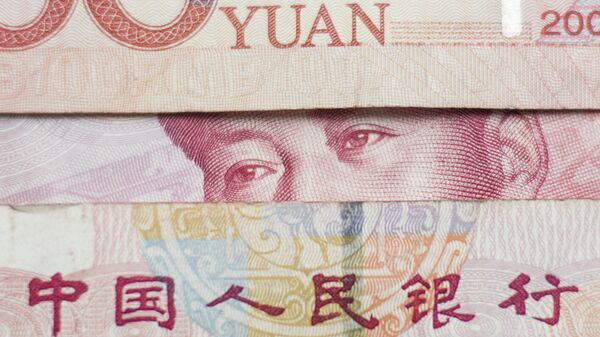China's GDP expansion is still below the 7 percent threshold, which had been seen by the Chinese officials as necessary pace of growth as late as of 2015. Domestic demand for goods and services advanced slightly, making up for China's declining international trading power.
China's economy grew 6.8 percent year-on-year in 4Q16, up from the previously estimated pace of growth of 6.7 percent. GDP growth for the year stood at 6.7 percent, its slowest since 1990. Signs of a rebound in the Chinese economy remain bleak, as international headwinds are weighing on the export-reliant Chinese manufacturing sector.
The main reason behind the slightly upbeat figures is the decline in capital outflows from China after the Chinese government made an effort to curb trans-border money loss. In December, the renminbi equivalent of $900 mln left China, according to data by the State Administration of Foreign Exchange. This is roughly 2 percent of the record-setting volume of funds showcased in September. Average annual capital outflows from China were $25.8 bln in 2016.
"We expect policy makers to further tighten capital controls should the pace of capital outflows accelerate again," Jenny Zheng and Robin Xing of the Hong Kong branch of Morgan Stanley wrote. "The measures implemented so far can help mitigate the pace of capital outflows in the short term."
Long-term risks to Chinese capital flows remain in place, however, and the hazards of lingering disinvestment stir little optimism regarding the future of Chinese economic expansion.
"We do not expect this (GDP growth) rebound to extend far into 2017, when a slowdown in the property market and steps to address supply shortages in the commodity sector ought to drag again on demand and output," Tom Rafferty of the Economist Intelligence Unit said.
Domestic demand is key to the long-term stability of the Chinese economy. The recent dynamics in capital flows and foreign trade have demonstrated that Beijing should step up its effort, decreasing its reliance and exposure to foreign markets in order to ensure proper GDP growth.
Retail sallies in China rose a staggering 10.9 percent year-on-year in December compared to earlier predictions of 10.7 percent, while manufacturing gained 6 percent, undershooting the previous estimate of 6.1 percent. Non-agricultural fixed-asset investment added 8.1 percent for 2016, the direct outcome of declining capital outflows.
"As China's traditional growth drivers, investment and exports, have weakened, Chinese private consumption has become the key engine for economic growth," Rajiv Biswas of Singapore-based IHS Global Insight said. "This trend is expected to continue over the medium term."
China's economy is now structurally closed to the advanced economies, with domestic consumption having increased its share in GDP. In 2016, domestic purchases drove some 64.6 percent of GDP, and services alone comprised more than half of the economy.
"The key risk to the Chinese economy in 2017 and 2018 is the possibility that faster than expected U.S. interest rate increases could intensify Chinese capital outflows and increase stresses on China's financial system," Bill Adams of PNC Financial Services Group said. In order to avoid these risks, the People’s Bank of China (PBOC) might tighten its policies as well, but this might entail a revaluation of the renminbi, something that would further impair the mainland’s position in international trade. Subsequently, a massive readjustment toward growth driven by domestic consumption is the ultimate solution for China as it will allow the country to put an end to capital outflows in the medium-to-long-term, spur growth, and ease the concerns of international trade.
Never miss a story again — sign up to our Telegram channel and we'll keep you up to speed!






